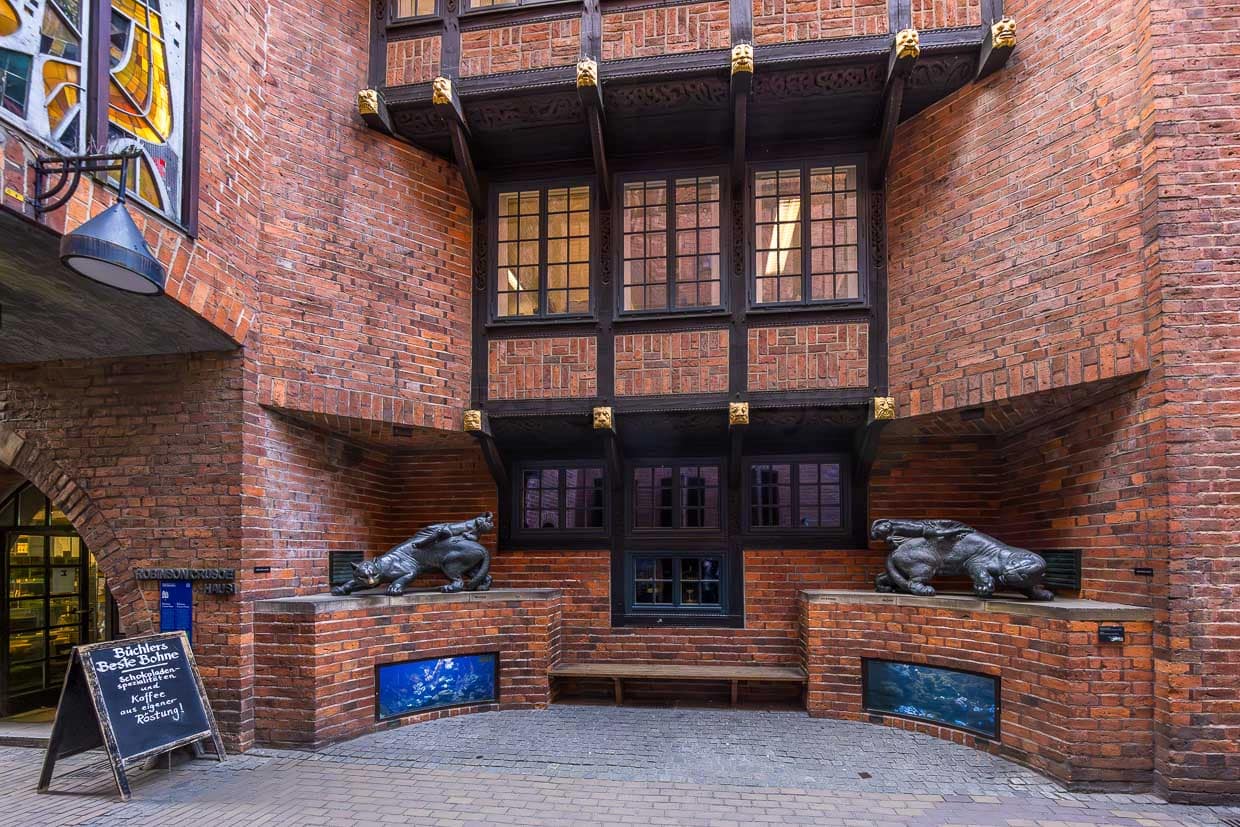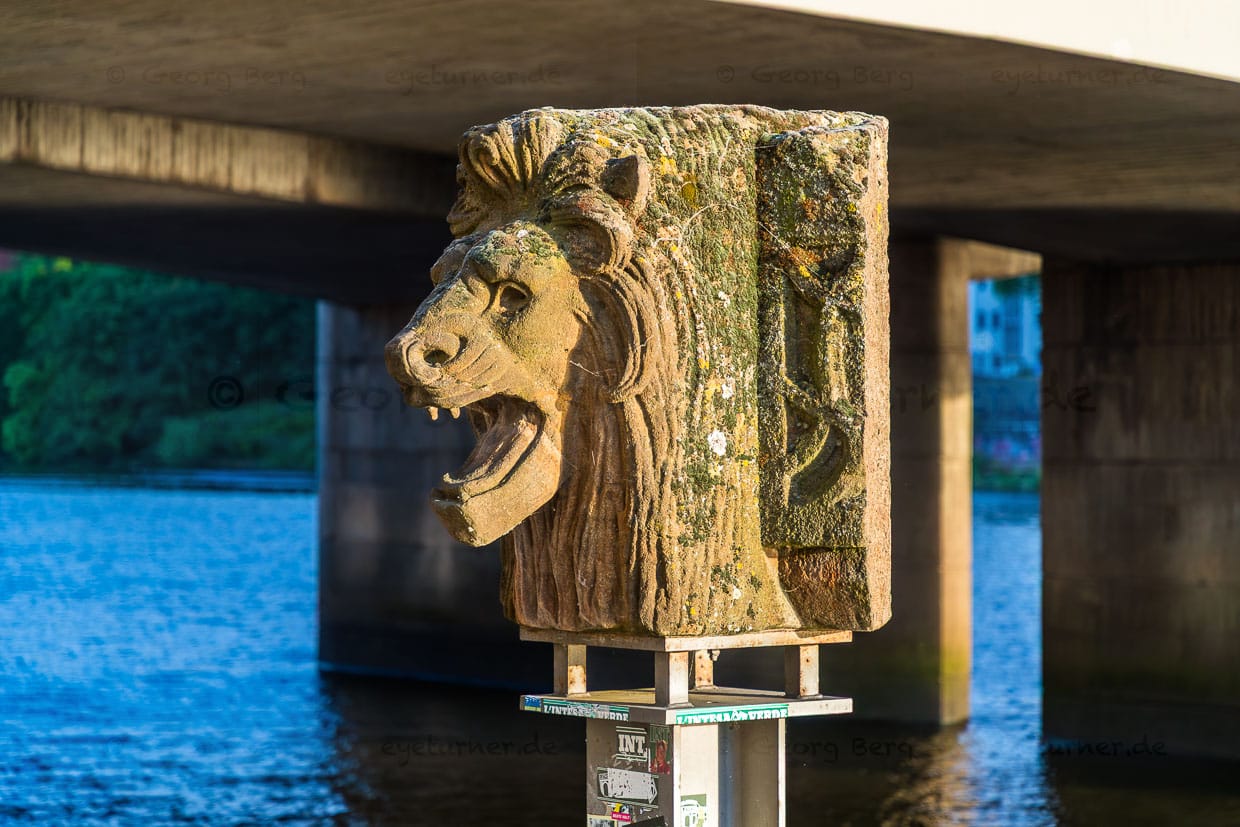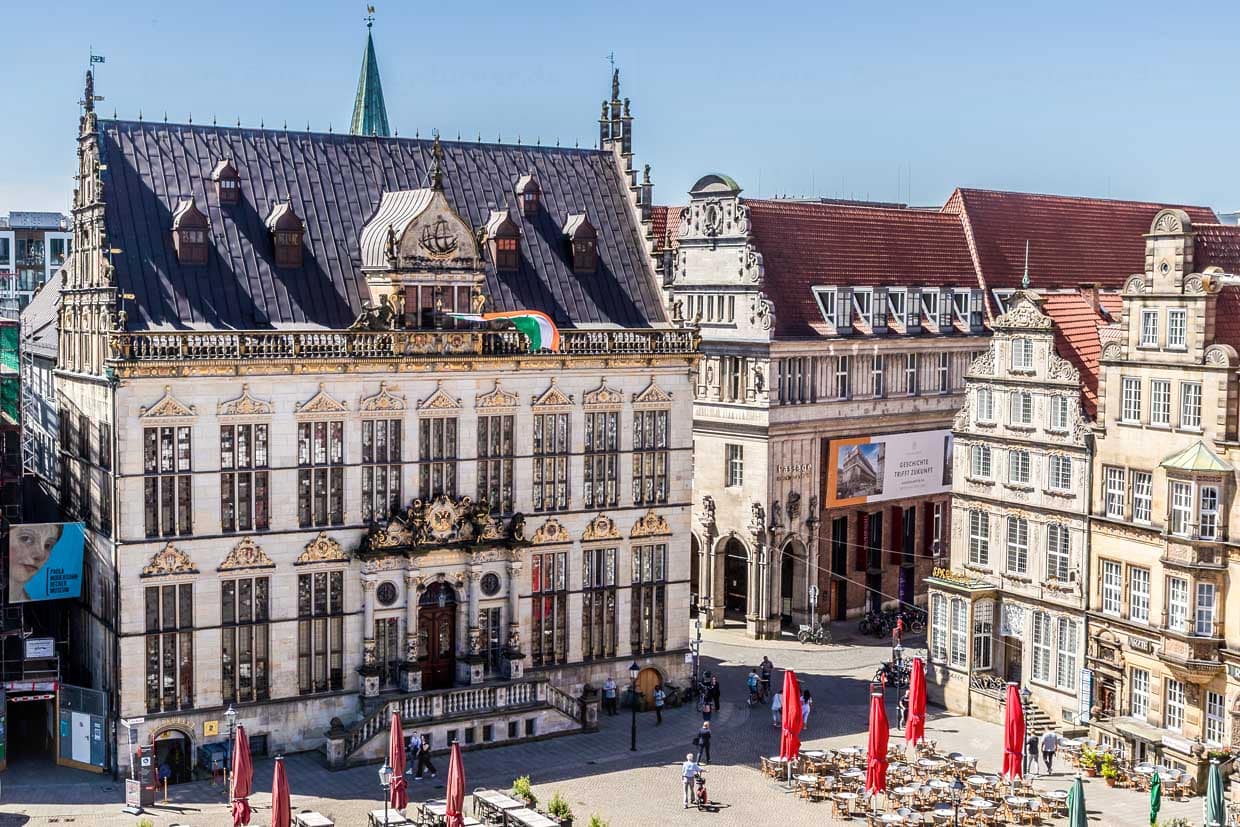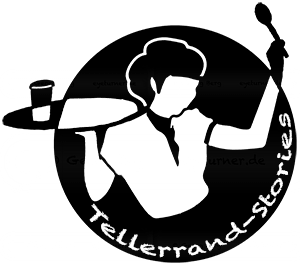Bremer Rathaus is the ideal starting point for exploring Bremen’s cultural diversity, historical significance and commercial tradition. The city stands for civic autonomy and freedom, symbolized by the UNESCO World Heritage ensemble of the Town Hall and the Roland statue. As a Hanseatic city, Bremen can look back on centuries of trading tradition. Alongside the sprightly Roland statue, the Bremen Town Musicians are the city’s landmark. Our tips combine well-known sights with discoveries off the beaten track and are also a plea for a guided tour of the city. Guided tours are almost always worthwhile: they deepen historical knowledge, provide insider tips, avoid mistakes when choosing restaurants and take away the worry of overlooking something important.

The Town Musicians of Bremen and happiness
Anyone familiar with the fairy tale of the Town Musicians of Bremen knows that the donkey, dog, cat and cockerel never reached Bremen. They found happiness on the way, in a robber’s house. Nevertheless, tourists make a pilgrimage to the statue of the four animals. A selfie with the Town Musicians is part of every visit to Bremen. Touching the donkey’s hooves is said to bring good luck – but be careful! Only if you put both hands on the hooves at the same time will you avoid the Bremen saying: “One donkey shakes hands with the other! ” Once across the market square, another attraction awaits, where the fairytale heroes take center stage.

The Bremen Hole swallows coins
The Bremen Hole, an interactive donation installation, is located on the market square. A bronze manhole cover with a coin slot plays animal sounds of the Town Musicians when inserted. Between 15,000 and 24,000 euros are raised each year. The donations go towards social projects in the city. A Low German inscription on the lid urges: “Don’t crow, don’t yowl, don’t growl, say I-ah, put something in the Bremen hole.”

The Bremen Town Hall and the Pope
The Bremen Town Hall was built between 1405 and 1410. It is the only town hall in the world to have Unesco World Heritage status. Over the centuries, Bremen developed into a symbol of civic self-determination and economic independence. Over the centuries, new elements were added to the façade. They are a reflection of their time. At the beginning of the 17th century, around 100 years after the church reformation, a relief was created on the façade that represents the tensions between the Catholic Church and the Protestant forces: The scene takes the Pope to task and shows him on his knees and with a cross in his buttocks.

The Golden Chamber, cannons and a minke whale
A guided tour of the magnificent town hall is a must. The Golden Chamber was built into the Upper Hall in 1605. Its magnificent décor with gilded leather wallpaper, stained glass and precious furniture still makes it a place for ceremonial receptions for high-ranking guests today. But don’t be dazzled by the gold of the chamber, because there is more to discover in the Great Town Hall. Right at the entrance door hangs a life-size painting of a whale. We tell you why in Whale watching. Miniature warships also hang from the imposing wooden ceiling.

The North German Lloyd, a schnitzel and the Blue Ribbon
The sound of seagulls and the smell of coffee accompany the city tour in Bremen. In some places you can spin a wonderful sailor’s yarn. The Schnoor district is one such place. Once home to craftsmen and fishermen, it is now a tourist destination. The small houses are lined up like a string (Schnoor), but the name comes from the Taumachers who worked here.

Back to the sailor’s yarn: a beautiful story unfolds at a wrought-iron gate in the Schnoor district. The golden letters NDL intertwine elegantly in a copper-colored oval. I stop, unsure of what story our city guide is about to tell when asked about the initials:

NDL stands for Norddeutsche Lloyd, one of the most important German shipping companies of the late 19th and early 20th centuries. The first steamship started operating as early as 1858 and opened a regular connection to New York. In the following decades, NDL developed into one of the world’s leading shipping companies, particularly in passenger and mail traffic across the Atlantic. NDL won the prestigious Blue Riband four times for the fastest Atlantic crossing. In 1929, the Bremen won the Blue Riband on her maiden voyage with a record time of four days, 18 hours and 14 minutes at an average speed of 27.8 knots. Captain Leopold Ziegenbein then commissioned his Swiss chef to create a special dish in honor of the success. The chef combined veal with cheese and ham and named the dish “Cordon Bleu”, in reference to the ship’s award.

Bremer Ratskeller with a smart exit strategy
A wooden bench in Bremen’s cathedral courtyard is also the emergency exit for the 5,000 square meter Ratskeller. A warning signal sounds before it opens, after which the bench folds to the side. More than 12,000 guests a year are now guided through the Bremen Ratskeller World Heritage Site

The fountain of the seven lazy men
The legend of the Well of the Seven Lazy Men tells of seven sons of a poor farmer who were known for their laziness. Their father’s fields were dry and sandy or swampy and barren. As the brothers were unable to find work in Bremen, they went out into the world to seek their fortune. Years later, they returned and put their knowledge to good use. They drained the fields with ditches, built a dam to the Weser, paved paths and built houses and a well. Their innovations irritated the neighbors. They were now considered lazy because they made life easier with practical solutions. German innovation skepticism at its finest!

Does fish carry caffeine?
Bremen, one of the largest transshipment points for green coffee in Europe, has many stories to tell about the bean. One of them takes place in Böttcherstraße, or more precisely in two aquariums. In the 1920s, when animal welfare hardly played a role, Ludwig Roselius, the inventor of Kaffee HAG, came up with a drastic idea: he mixed caffeine into the water of one of the aquariums at the Robinson Crusoe House. The fish in it became frantic or died, while their counterparts in the caffeine-free tank went about their business calmly. With this experiment, Roselius wanted to emphasize the health benefits of decaffeinated coffee and promote his digestible coffee HAG.

Was Robinson Crusoe ever in Bremen?
Ludwig Roselius did not have the aquariums in the Robinson Crusoe House installed for a caffeine experiment with fish. Rather, they were intended to emphasize the connection between the architecture and Bremen’s maritime tradition. The aquariums symbolize the importance of shipping and trade for the city. But why Robinson Crusoe? The most famous castaway in world literature did not end up stranded in Bremen. But Daniel Defoe gave his hero a Bremen merchant as a father in 1719. Today, the Robinson Crusoe House at Böttcherstraße 1 is home to the Büchlers Beste Bohne coffee roastery – caffeine included.

What is the lion doing on the Weser?
The lion’s head on the Weser promenade in Bremen comes from the Great Weser Bridge, which was built between 1893 and 1895. Sandstone lion heads were attached to each of the bridge piers, looking up and down the Weser. In April 1945, the bridge was blown up by the National Socialists to hinder the advance of the Allies. The lion’s heads fell into the Weser. It was not until 1998 that two of these heads were accidentally recovered during work on the riverbank. Today, they stand on steel steles below the Wilhelm Kaisen Bridge.

Memorial to the Aryanization on the Weser Promenade
The Aryanization memorial on the Weserpromenade in Bremen has commemorated the systematic expropriation and robbery of Jews during the National Socialist era since 2023. The design was created by Evin Oettingshausen. The memorial is located where ships brought the looted furniture and objects from the occupied countries in Western Europe to Bremen. In the background is the headquarters of Kühne + Nagel. The company played a central role in the so-called “M-Aktion” during the Nazi era. Find out more in Repressed History: The Aryanization Memorial in Bremen

The Paula Modersohn-Becker Museum
The Paula Modersohn-Becker Museum in Bremen is the world’s first museum dedicated to a female painter. It was commissioned by Kaffee HAG founder and patron Ludwig Roselius. It was built in 1927 by Bernhard Hoetger, who inspired her last creative phase in Paris in 1906. Works from all of the artist’s creative phases are on display in the expressionist brick building. A large part of her work is concentrated in Bremen. The museum’s collection, the holdings of the Paula Modersohn-Becker Foundation and the holdings of the Kunsthalle Bremen. Find out more in Paula in Paris, Chicago, Bremen

Moin Bremen!
In Bremen you can eat excellent seafood. Bremen is also known as the coffee city and has the Paula Modersohn-Becker Museum, the world’s first museum dedicated to a female painter. In Whale watching, we explain why a life-size painting of a whale hangs in the Old Town Hall. Bremen also has a culture of remembrance: since 2023, the Arisierungs-Mahnmal on the Weser Promenade has commemorated the systematic dispossession of the Jewish population during the Nazi era and a guided tour of the city with special eye-catchers in mind.
The research was supported by Bremen Tourismus


